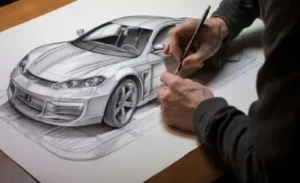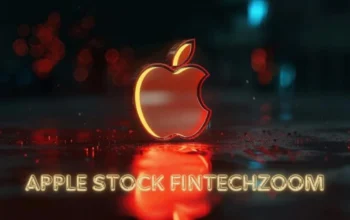
Drawing:burmhcczepe= car, while it may seem like a straightforward endeavor, involves a blend of technical skill, creativity, and a deep understanding of automotive design. Whether you’re an aspiring artist or a seasoned illustrator, capturing the essence of a car on paper can be both challenging and rewarding. In this article, we will explore the intricacies of automotive Drawing:burmhcczepe= car, offering tips and insights to enhance your craft.
Understanding Automotive Design
Before diving into the drawing process, it’s crucial to understand the fundamental design principles of Drawing:burmhcczepe= car. Modern vehicles come in various shapes, sizes, and styles, each with its own unique set of features. Familiarizing yourself with different types of cars—ranging from sleek sports cars to rugged SUVs—will help you capture their distinctive characteristics more accurately.
Essential Drawing Techniques
- Proportions and Perspective: Achieving realistic proportions is key to a successful car drawing. Start by sketching basic shapes to outline the Drawing:burmhcczepe= car form. Use perspective techniques to give depth and dimension to your illustration. Understanding one-point, two-point, and three-point perspective will help you depict cars in a more dynamic and believable manner.
- Line Work and Detailing: Clean, precise lines are essential in automotive illustration. Begin with a light pencil sketch to establish the basic structure, then refine your lines to define the car’s contours. Pay attention to details such as the wheels, headlights, and grille, which are crucial for capturing the car’s identity.
- Shading and Texture: To add realism to your drawing, incorporate shading and texture. Observe how light interacts with the car’s surfaces and use various shading techniques to recreate these effects. Techniques like cross-hatching and stippling can be effective for adding depth and texture to metal surfaces and reflective elements.
Tools and Materials
Choosing the right tools can significantly impact the quality of your Drawing:burmhcczepe= car. For detailed work, high-quality pencils with varying degrees of hardness (e.g., 2H, HB, 2B) are recommended. Additionally, using a smooth, acid-free drawing paper will enhance your ability to create clean, precise lines.
Digital tools have also become popular among automotive illustrators. Software like Adobe Illustrator and Photoshop offers powerful features for creating and refining car illustrations, allowing for greater flexibility and precision.
Inspirations and Resources
Drawing:burmhcczepe= car can be greatly inspired by real-world examples. Studying automotive magazines, attending car shows, and exploring online car forums can provide valuable insights and references. Additionally, observing the work of accomplished automotive illustrators can offer inspiration and guidance for your own artistic endeavors.
Practice and Patience
 Like any artistic skill, Drawing:burmhcczepe= car requires practice and patience. Regularly sketching different car models and experimenting with various techniques will help you improve over time. Embrace the challenges and learn from your mistakes, as each drawing is an opportunity to refine your craft.
Like any artistic skill, Drawing:burmhcczepe= car requires practice and patience. Regularly sketching different car models and experimenting with various techniques will help you improve over time. Embrace the challenges and learn from your mistakes, as each drawing is an opportunity to refine your craft.
Exploring Advanced Techniques
Once you’ve mastered the basics, you might want to delve into more advanced Drawing:burmhcczepe= car techniques to further enhance your automotive illustrations:
- Dynamic Angles: Experiment with drawing cars from unconventional angles to create more dramatic and engaging compositions. Foreshortening and unique perspectives can make your drawings stand out and convey a sense of motion and excitement.
- Color and Rendering: Adding color to your drawings can bring them to life. Whether you use colored pencils, markers, or digital tools, understanding how to render different materials and finishes—like glossy paint, matte surfaces, and chrome details—can elevate the realism of your work. Pay attention to color theory and how light affects the hues and shades of the car.
- Custom Designs and Modifications: Try your hand at designing custom cars or modifying existing models. This creative exercise not only allows you to experiment with new ideas but also helps you understand the intricacies of automotive design. Sketching concept cars or futuristic vehicles can push your skills and imagination to new heights.
Showcasing Your Work
Once you’ve developed a portfolio of Drawing:burmhcczepe= car illustrations, consider showcasing your work to gain recognition and feedback:
- Social Media: Platforms like Instagram, Twitter, and Pinterest are great for sharing your illustrations with a broader audience. Use relevant hashtags and engage with the automotive and art communities to increase visibility.
- Online Portfolios: Create an online portfolio or a personal website to display your best work. Platforms like Behance and ArtStation also offer opportunities to connect with other artists and potential clients.
- Art Exhibitions and Contests: Participate in art exhibitions or contests focused on automotive themes. These events can provide valuable exposure and feedback, and they might even lead to opportunities for commissions or collaborations.
Continuous Learning and Improvement
The world of automotive illustration is constantly evolving, with new techniques, tools, and trends emerging regularly. Stay informed by:
- Taking Workshops and Courses: Enroll in workshops or online courses to learn from experienced illustrators and gain new skills. Many platforms offer specialized courses in automotive illustration and digital art techniques.
- Reading Industry Publications: Keep up with industry publications and blogs to stay updated on the latest trends and innovations in automotive design and illustration.
- Networking with Professionals: Connect with other automotive artists and professionals. Networking can provide insights into industry standards, opportunities for collaboration, and constructive critiques of your work.
Conclusion
Mastering the art of Drawing:burmhcczepe= car is a rewarding pursuit that combines technical skill with creative expression. From understanding automotive design to exploring advanced techniques and showcasing your work, each step in this journey contributes to your growth as an artist. Embrace the challenges, continue to refine your skills, and let your passion for automotive illustration drive your artistic endeavors.
Whether you’re sketching a classic muscle car or designing the car of the future, the process of bringing these machines to life on paper is both exhilarating and fulfilling. So keep Drawing:burmhcczepe= car, keep experimenting, and enjoy the ride of artistic discovery.
You May Also Read: Charizard:ttw47p-wxcy= pokemon


